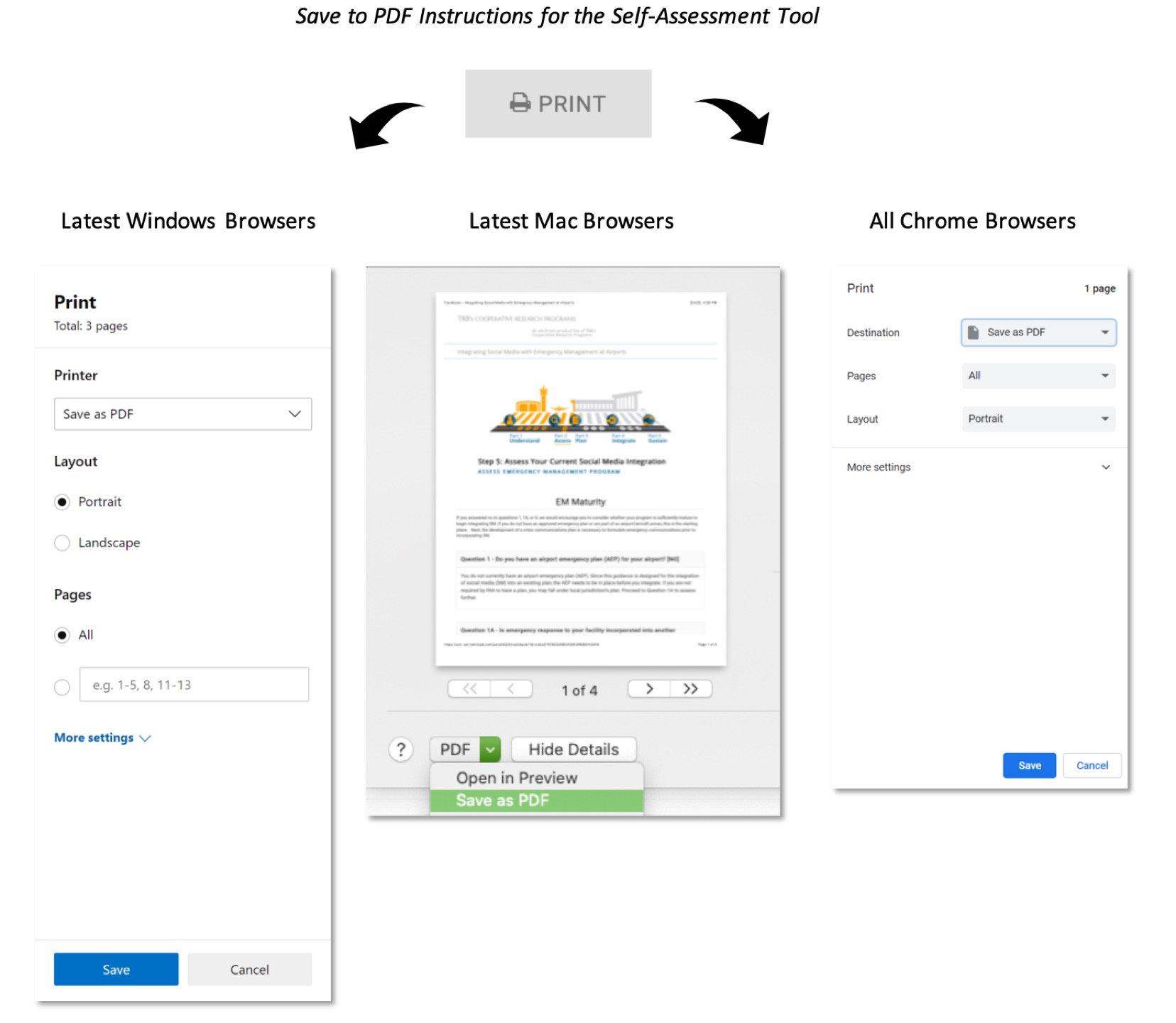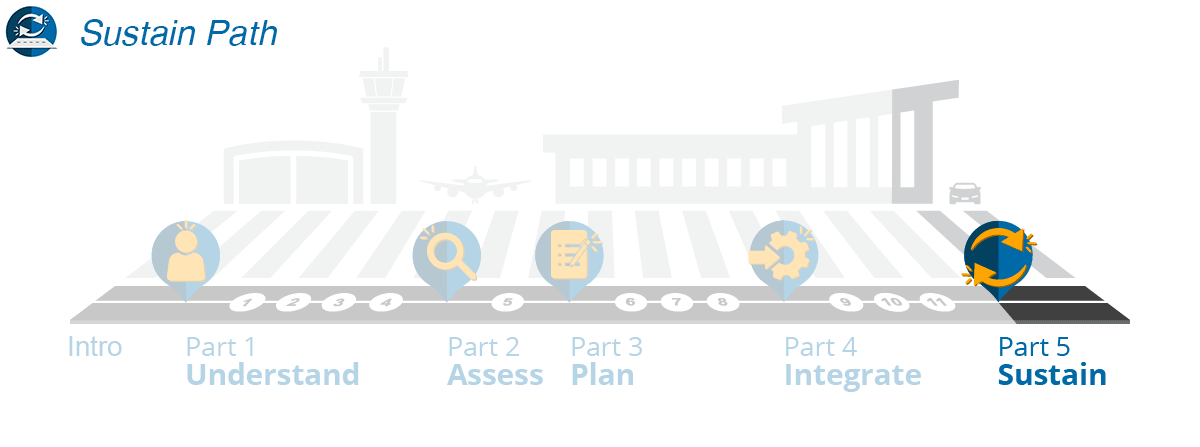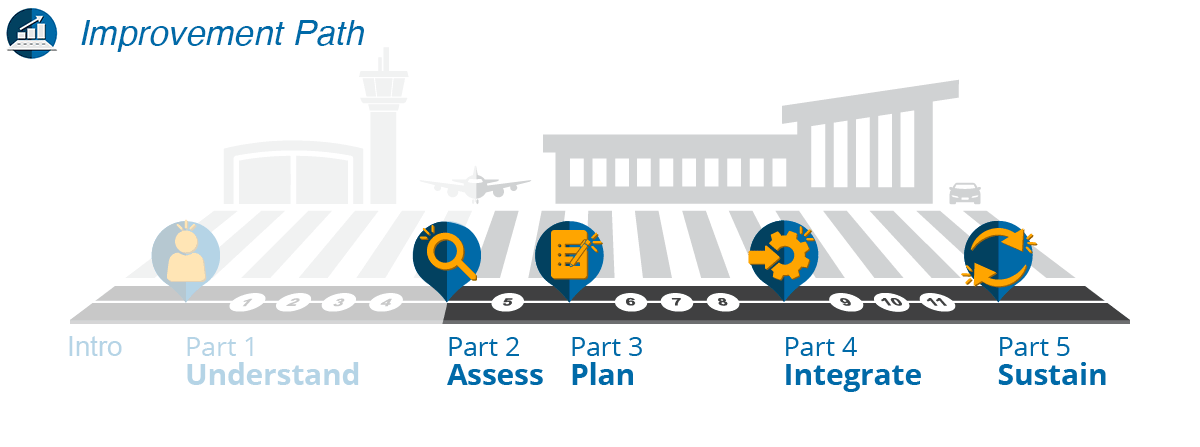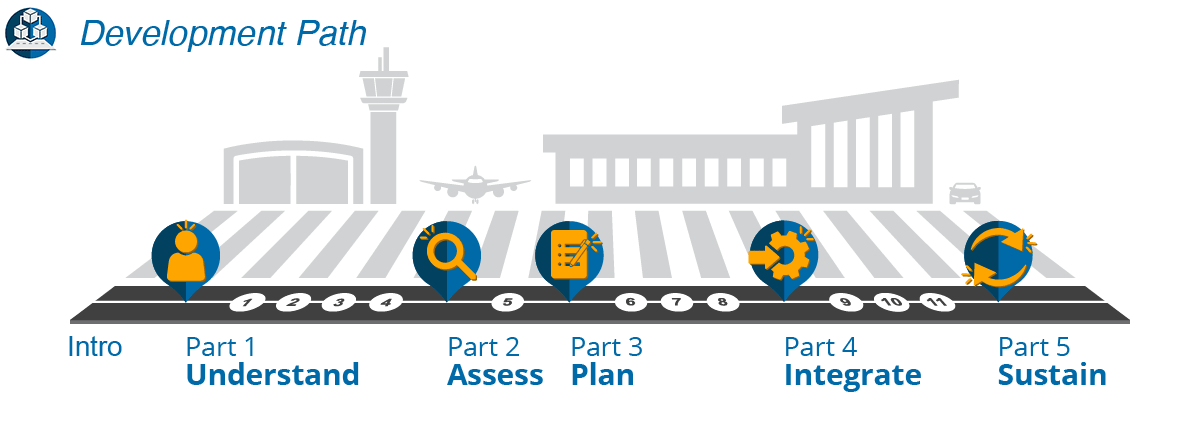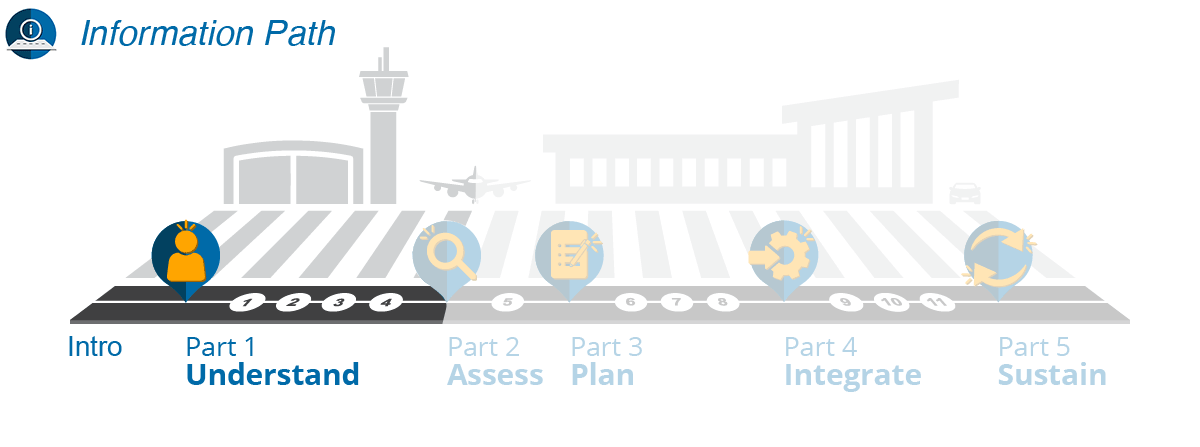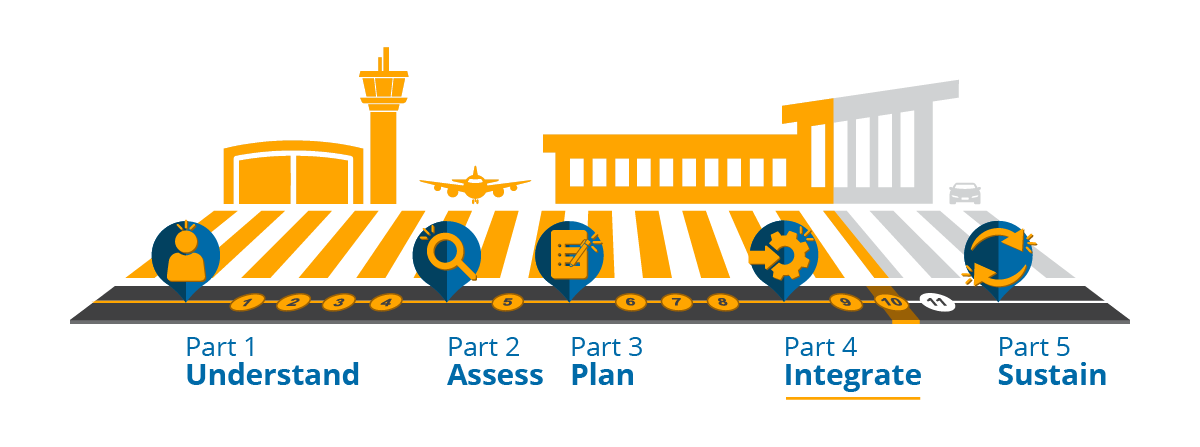
Step 10: Establish the Social Media Operating Framework
Training Plan
Training is key to an effective SMEM program. In addition to required or recommended EM training, your integration effort should include general SM training for employees who may be unfamiliar with the social web. It should also include tool-specific training for those using any SM tools or performing any of the management functions on one or more of the SM channels.
In numerous places throughout its report, Next Steps: Social Media for Emergency Response, the Department of Homeland Security offers a perspective on this aspect of planning.1 Training should be provided for operational readiness, ensuring readiness during an event, and data reporting, ensuring comprehension of the various alerts, metrics, and follow-up reports after an event.
No matter your level of governance or structure, training is essential for achieving proficiency. However specialized training is delivered, you should incorporate it into the foundational core training program and should cover the basics and best practices for airport emergency response. Certifications are helpful in establishing consistency and may be incorporated either into the core training program or offered as an elective for team members seeking certification. Additionally, you should provide regular updates to training for more dynamic tool and platform capabilities and uses.
Training Resources
“Emergency Planning and Response for Airlines,” International Airport Transport Association, https://www.iata.org/en/training/courses/emergency-planning-management/142/en/
“Emergency Management Institute,” Federal Emergency Management Agency (FEMA), https://training.fema.gov/emi.aspx
“Emergency Management Certifications: Consider Both National and State Options,” American Military University, https://inpublicsafety.com/2016/03/emergency-management-certifications-consider-both-national-and-state-options/
For all training, you should align with adjacent processes to ensure smooth coordination and consistent action across teams during a crisis. The central theme of cross-team/multi-departmental cooperation is the ability to effectively coordinate crisis information arriving from multiple sources, process it, and turn it into an action plan. This requires a common training base supporting coordinated, rehearsed processes.
You may provide training by a tool vendor, who often shares such resources either online or (perhaps at a cost) on site. For specific training resources and opportunities, refer to the list in the Resources tab of this WebResource. The following are some additional options for training.
Federal Training on the Integration of Social Media with Emergency Management
The Federal Emergency Management Agency (FEMA), the Federal Aviation Administration (FAA), and the Centers for Disease Control and Prevention (CDC) have developed a number of training resources that work very well at airports. Since they fall under the National Incident Management System (NIMS)/Incident Command System (ICS) mandate, FAA and CDC planning documents are useful if you wish to align with federal agencies (as suggested in Step 6).
FEMA, CDC, and the National Transportation Safety Board (NTSB) provide comprehensive training and instruction opportunities to all levels of government personnel as well as public and private agencies. All their training curricula have been updated to incorporate the integration of SM into EM. These federal entities emphasize the need for airport professionals, especially those in the SM and EM disciplines, to retake courses pertaining to everyone’s discipline if the prior training/instruction occurred more than 3 years ago. Additionally, they encourage airport personnel from all disciplines to take advantage of their training opportunities, considering the role that airport personnel of all disciplines play in SM integration.
Airport Training Opportunities
Depending on the governance structure or size of your airport, the responsibility for training may fall to a local jurisdiction (such as fire or police departments, EM, or a municipal authority). Identify the best group and format to educate your community on SMEM.
- Airport\Local EM might be the primary responsible party at an airport for providing effective NIMS, ICS, and joint information system (JIS) training to all entities and organizations that may be called upon to support an emergency or large-scale disruption response effort.
- Airport\Municipality Public Affairs is usually the primary responsible party for providing SM training to other airport personnel. This training enables you to
- Acquire an appreciation for the fundamental principles and practices provided in this WebResource.
- Successfully integrate SM into normal duties in order to effectively accomplish the objectives of the crisis communications plan.
- Know how to use SM as you
- Provide real-time information regarding status and the status of the operating environment.
- Disseminate information to those being served as directed by the ICS [i.e., emergency operations center (EOC) and/or JIC] to enable real-time shared situational awareness throughout the airport community.
- Airport Operations Centers (AOCs)\Public Safety dispatches are being established at some airports in order to support the daily operations of the airport community. SM or operations personnel are often the first to detect an incident. As such, AOC personnel are modeling their SOPs after the EOC SOPs. This has accomplished the following:
- Enables the rapid and orderly activation of an EOC should an emergency response effort be required.
- Leverages the training offered by EM and SM and enables all personnel to actively support AOC operations on a 24/7 basis
Exercising Airport Emergency Plans
Airport operators certified by the FAA for serving air carrier operations (i.e., 14 CFR Part 139 certified airports) are obligated to satisfy FAA requirements regarding airport emergency plan (AEP) review/update as well as demonstrating proficiency in executing the plan through a full-scale exercise. Those who are not Part 139 certified may work with the local jurisdiction to include an “airport scenario” in their exercise plans. There are a number of ways to integrate SM into your training and exercise practices:
- Standard training and exercises
- SM-focused training and exercises
- Simulations
- Internal messaging for shared situational awareness
- Event integration
- Day-to-day (normal operations) integration
Standard Training and Exercises
EM personnel at your airport probably have a standard training and emergency planning exercise calendar that SM professionals should review to ensure all facets of SM integration have been properly addressed. Items you should consider looking into include the following:
- Tabletop exercises of SM integration to the communications section of the emergency plan. These are a useful means of confirming the effectiveness of training and demonstrating/maintaining proficiency.
- An identified “special focus area” (common in full-scale exercises), which is exercised and analyzed more thoroughly than other areas of the plan. SM integration into EM can be designated a special focus area as part of a full-scale exercise.
- Having EM and SM professionals work with local, regional, state, and federal agencies whenever such agencies conduct large-scale tabletop or full-scale exercising of their EOCs and JICs.
- Invitations from energy sector providers (gas, electric, oil, etc.) in your region to practice exercises. FEMA encourages airports to participate in these exercises. Also look for opportunities to practice with health care providers and medical authorities in your area.
Social Media–Focused Training and Exercises
SM personnel often provide training in day-to-day SM activity and develop focused exercises with EM regarding SM integration during large-scale events. Consider the following:
- Daily exercising of SM practices and principles enables the development of the proficiency that will be required during an emergency event.
- SM personnel are incorporating and reinforcing in their normal training and SOPs the same types of principles and practices that will be used in an ICS and JIS environment. The rapid escalation of SM messaging rate/volume at the onset of an incident brings additional challenges.
Simulations
SM, EM, and operations professionals should also conduct simulated event exercises in order to enable communications personnel to develop and maintain their proficiency in accordance with direction provided by the crisis communications plan. Airport operators of differing levels of SM maturity should develop appropriately scaled SM response capability.
Internal Messaging for Shared Situational Awareness
Operations professionals from the various lines of business have begun to establish practices and procedures that enable real-time, shared situational awareness with their counterparts and with stakeholders of the airport. This includes being immediately advised of any potential public (SM) incidents or disruptions to systems or services at the airport.
SM is recognized as providing an opportunity that enables all stakeholders to more effectively enable real-time, shared situational awareness and manage overall airport operations pertaining to matters of concern to the public:
- Operations, SM, and EM professionals alike are also realizing the value of internal-facing SM in coordinating an effective response effort. Although this messaging is internal, it should comply with SM principles and SOPs due to the reality that all internal SM messaging is subject to Freedom of Information Act requests.
- When an airport operator uses SM during normal operations, the surrounding community becomes increasingly familiar with and proficient in the use of SM during emergency responses. SM integration into daily operations has resulted in the following benefits:
- Higher customer satisfaction based upon the quick response to incidents reported through SM.
- Less impact being realized across the airport community from normal operating disruptions (e.g., temporary loss of a system, accidents, isolated incidents of passenger-caused disruptions, or unacceptable customer service delivery, etc.).
- Effective real-time, shared situational awareness with C-suite executives, the public, and elected officials during a high-profile, SM-driven incident.
Event Integration
Irregular operations (IROPS) events and special events (air shows, high-profile sports events such as the Super Bowl, airport tours, and events) are further examples of how SM, EM, and operations personnel can exercise their airport-wide crisis communications and emergency response plan. These events provide opportunities to practice and improve your messaging in generally low-stress environments.
Day-to-Day (Normal Operations) Integration
Airport SM, EM, and operations professionals with or without an AOC have recognized the benefit of incorporating the standard practices and procedures used during an emergency response into the conduct of their daily duties. This enables a more rapid and effective response. The following are some examples of these normal operations practices:
- Daily airport-wide operations calls
- Daily SM monitoring and responding
- Aircraft Rescue and Fire Fighting (ARFF) response to Alert II and Alert III incidents
- Participating in hub airline daily operations calls
Take the time to develop a well-thought-out SM operating framework to ensure that all the time and effort put into assessing and planning your integration is properly used. In the next and final step, you will modify your plans and begin implementing the integration of SM into EM.
REFERENCES
1. Next Steps: Social Media for Emergency Response, Department of Homeland Security (Washington, D.C.: 2012), https://www.dhs.gov/sites/default/files/publications/Virtual%20Social%20Media%20Working%20Group%20VSMWG%20Next%20Steps%20Social%20Media%20for%20Emergency%20Response.pdf.
